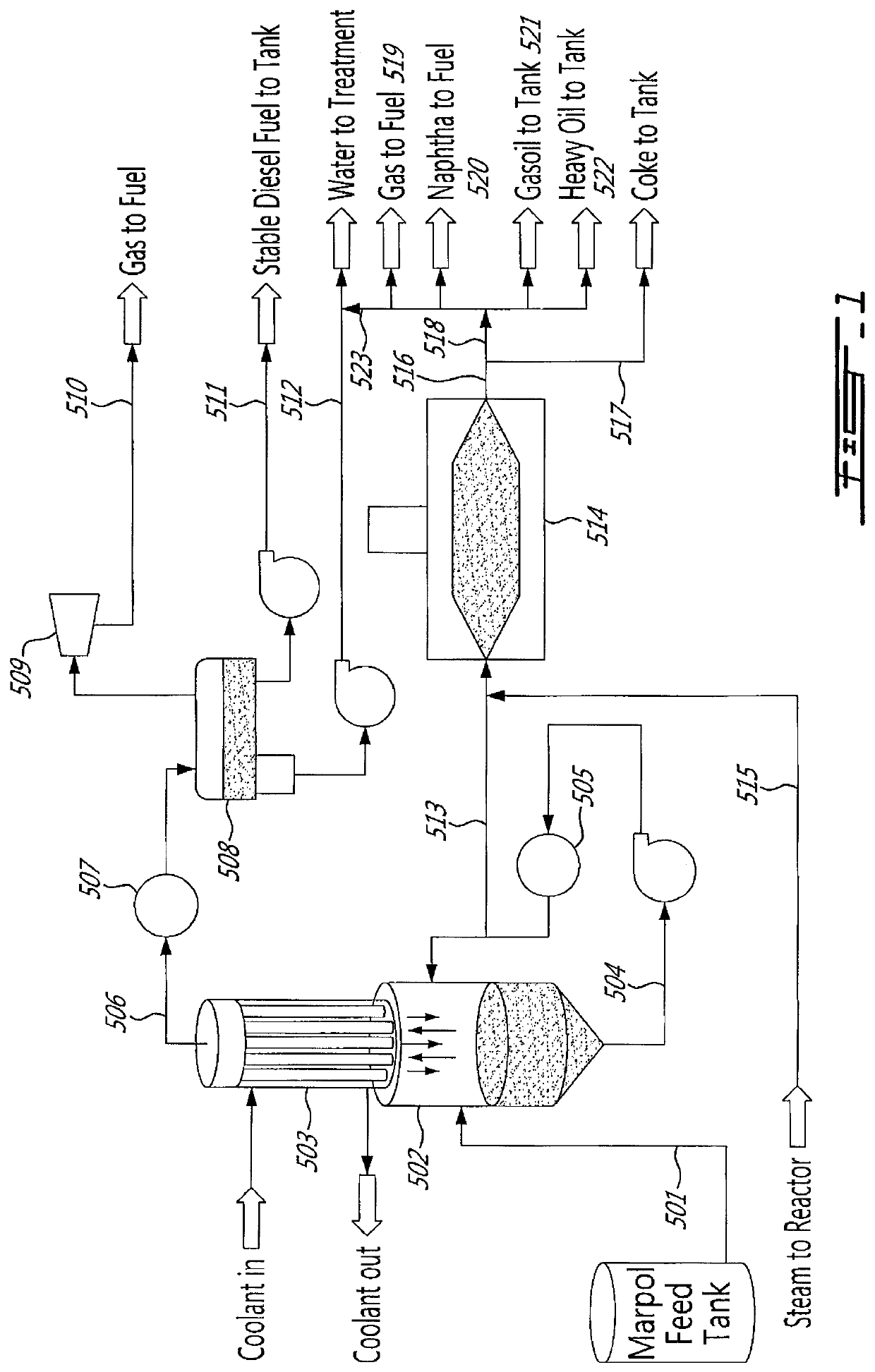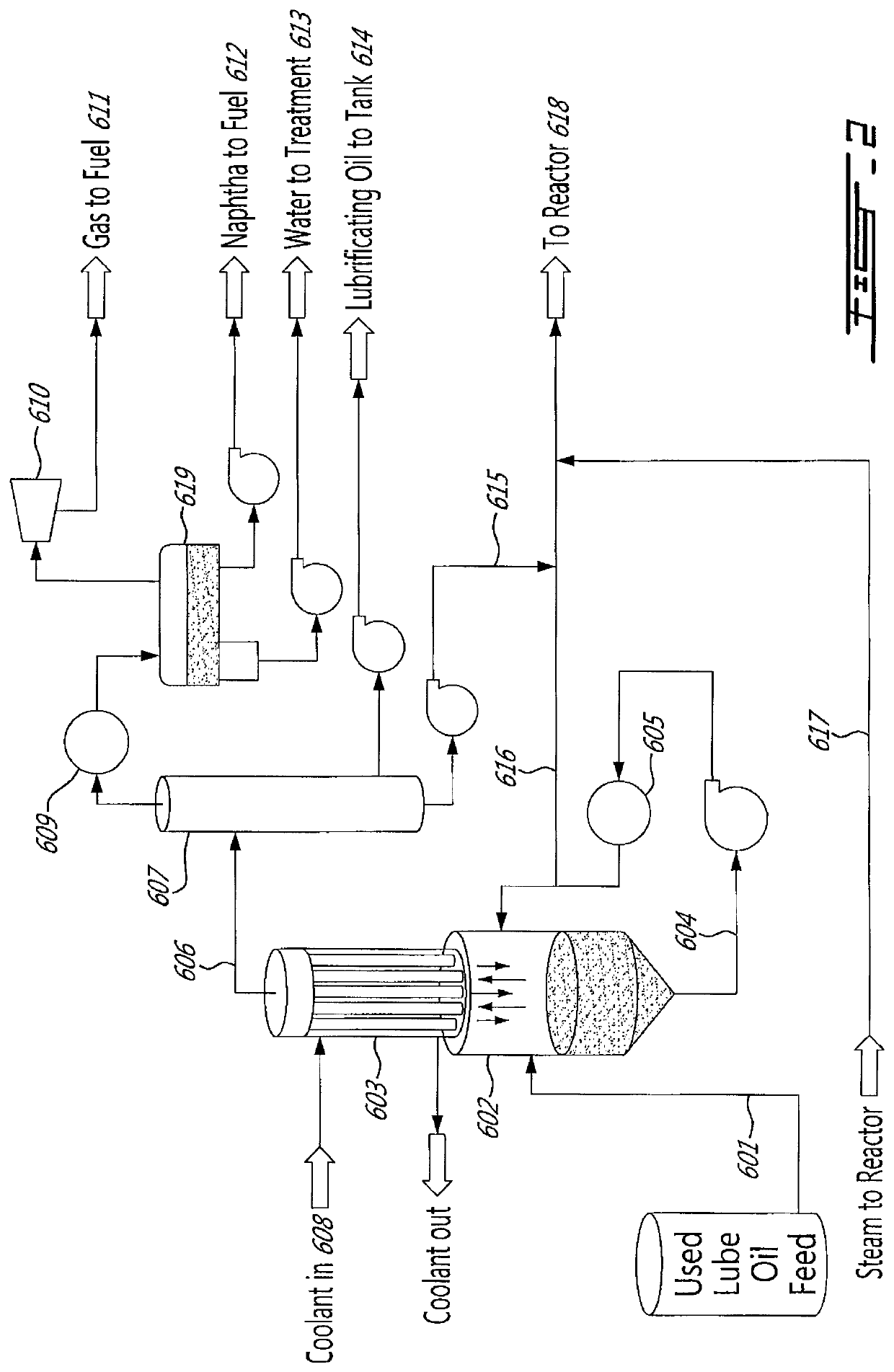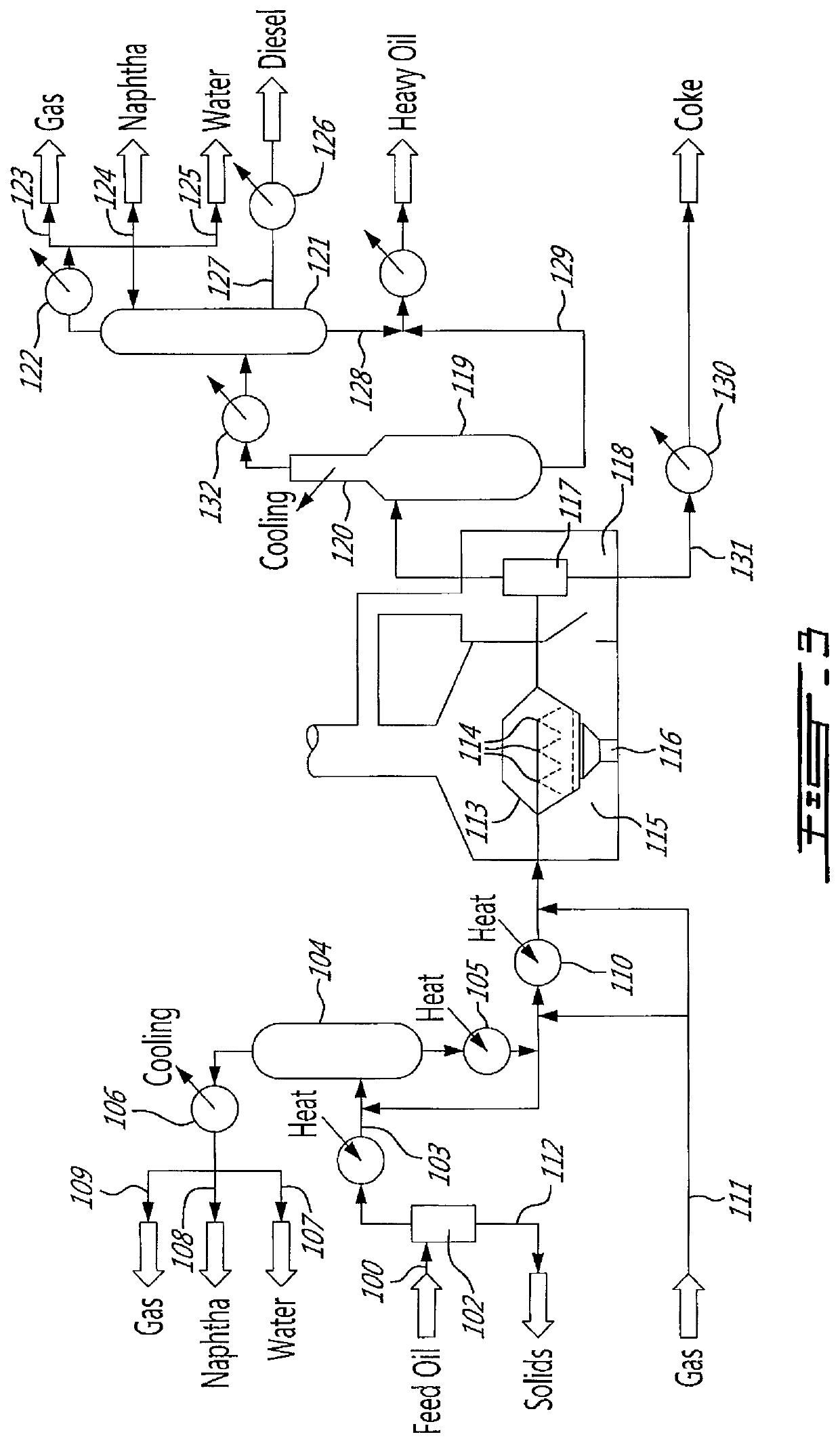Hybrid thermal process to separate and transform contaminated or uncontaminated hydrocarbon materials into useful products, uses of the process, manufacturing of the corresponding system and plant
a technology of hydrocarbon materials and thermal processes, which is applied in the production of liquid hydrocarbon mixtures, hydrocarbon distillation, carbonaceous materials, etc., can solve the problems of large large amount of laboratory analysis, and environmental threat, and achieves the effect of improving the amount of light oil recovered and low conten
- Summary
- Abstract
- Description
- Claims
- Application Information
AI Technical Summary
Benefits of technology
Problems solved by technology
Method used
Image
Examples
example 1
[0273]FIG. 1 illustrates the process when marpol is treated. Marpol, or waste oil from ship fuel tank bottoms, is introduced at 90 degrees Celsius with about 3% weight water (501) into the flash drum (502). It operates under vacuum and is kept at temperatures below the oil's initial thermal cracking temperature. The flash drum can be heated by circulating (504) the bottom oil through a heat exchanger (505), as illustrated here. It can also be heated through a heater or direct heating of the flash drum walls. The oil and water vapours escape the flash drum into the tubes of a self-refluxing condenser, or dephlegmator, (503). Some of the vapours condense in the tubes of the dephlegmator and fall back into the flash drum. The vapours exiting the top of the dephlegmator (506) are cooled in a heat exchanger (507), and the water, oil and gas phases are separated in a phase separator vessel (508). The vacuum is established with a vacuum pump, a compressor or ejectors (509). The gases are u...
example 2
icating Oil
[0276]FIG. 2 illustrates the process when used lubricating oil is treated. Used lubricating oil (601), containing about 5% wt. water, is heated to 90 degrees Celsius and introduced into the flash drum (602). It operates under vacuum and is kept at temperatures below the oil's initial thermal cracking temperature. The flash drum can be heated by circulating (604) the bottom oil through a heat exchanger (605), as illustrated here. It can also be heated through a heater, direct heating of the flash drum walls or by the injection of a hot fluid into the flash drum. The oil and water vapours escape the flash drum into the tubes of a self-refluxing condenser, or dephlegmator, (603). The dephlegmator is cooled with a coolant (608) such as air, water, a cooler oil, or feed oil. Some of the vapours condense in the tubes of the dephlegmator and fall back into the flash drum. The vapours exiting the top of the dephlegmator (606) are routed to a product separation system, shown here ...
examples 3
Mobile Plant for Thermally Treating a Feed Oil, that is a Contaminated Oil
[0278]The mobile plant represented on FIG. 15, has a capacity of 50 barrels per day (BPD) for thermally treating waste oils, and making useful products without environmentally harmful by-products.
[0279]The mobile plant includes a rotating reactor having the following specifications:[0280]Reactor cylinder internal diameter: 5′
Reactor cylinder length: 20′
Heat released: 0.5 MMBtu / hr.
Conic section heights: 2.5′
Housing external size: 7′ high 6′ wide and 26′ long
[0281]Following are examples of thermal cracking tests performed in rotating kilns:[0282]Examples 4, 5, and 6 were tests performed using dry waste oil drawn from the same drums to eliminate test result differences due to variations in feed oil quality as much as possible.[0283]Example 4 was performed with the injection of 5% weight. water added to the 16 l / hr. reactor feed oil.[0284]Example 5 kept the same oil feed rate and operating conditions as in example...
PUM
| Property | Measurement | Unit |
|---|---|---|
| pressure | aaaaa | aaaaa |
| pressure | aaaaa | aaaaa |
| temperature | aaaaa | aaaaa |
Abstract
Description
Claims
Application Information
 Login to View More
Login to View More - R&D
- Intellectual Property
- Life Sciences
- Materials
- Tech Scout
- Unparalleled Data Quality
- Higher Quality Content
- 60% Fewer Hallucinations
Browse by: Latest US Patents, China's latest patents, Technical Efficacy Thesaurus, Application Domain, Technology Topic, Popular Technical Reports.
© 2025 PatSnap. All rights reserved.Legal|Privacy policy|Modern Slavery Act Transparency Statement|Sitemap|About US| Contact US: help@patsnap.com



